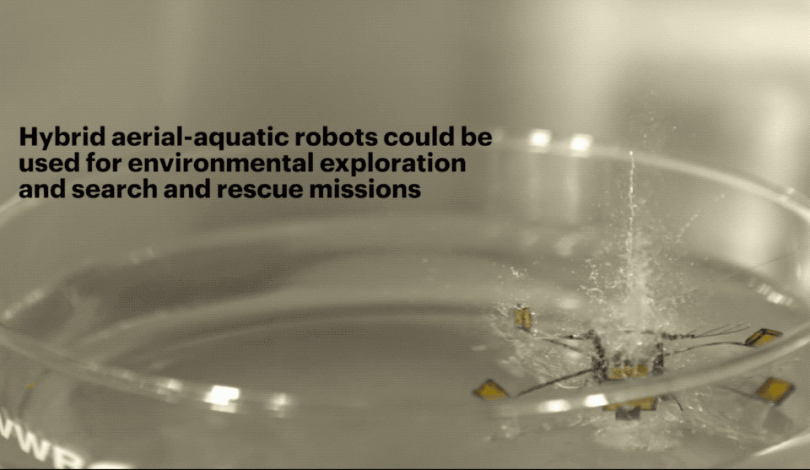That shy flight we saw a few years ago is nothing compared to what little RoboBee can do now. Harvard researchers have advanced a lot in their little creature – RoboBee, and if last year showed how with the help of static electricity could stick it to walls, today the team of scientists shows how RoboBee is able to fly, dive into the water and resume the flight.
And if it sounds difficult, it is even more so if we consider that the RoboBee measures only two centimeters and weighs much less than a five-cent coin. With those dimensions, RoboBee moves through water would be like doing it in honey, and breaking its surface would be similar to a brick wall. Hence the complexity of the RoboBee project.
To solve these problems the team of the Wyss Institute of Harvard and the School of Engineering John A. Paulson designed new mechanisms that allow the RoboBee to pass from water to air without problems. The first thing they did was to define the proper flutter speed so that the wings worked correctly in aerial and aquatic environments. Using theoretical models and experimental data, they determined that 220 to 330 hertz is the best for flying, while 9 to 13 hertz is the best for water.
Once controlled the movement had to solve the passage of the liquid element to the air since they needed to break the surface tension of the water so that the small robot could escape. For this, they use a two-step system, first a small chamber stores water, and an electrolytic plate placed inside it is responsible for converting the water into oxyhydrogen, which provides enough additional buoyancy for the RoboBee wings to get out of the water. Inside the camera makes the oxyhydrogen become the perfect fuel to get fired up, is the perfect impulse to fly away.
This, which looks like a simple game, could be useful in the future for small micro-robots like this RoboBee to be used for exploration and rescue missions, as well as serving to inspire other designs that allow other types of functions that were previously unthinkable.







